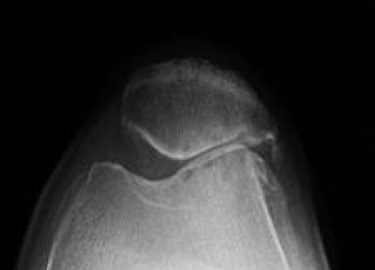Anterior Knee Pain
Anterior knee pain refers to pain at or adjacent to the patella. It is one of the most common presenting problems seen in a sports medicine practice and its cause can be difficult to ascertain.
Causes
- Biomechanical Causes- Genu valgum ('knock knees'), excessive femoral anteversion and pronated (flat) feet. Tight muscles or weak muscles (Quadriceps, Hip Abductors) can affect patellofemoral joint function.
- In Adolescents- Osgood-Schlatter's disease, Sinding-Larsen-Johansson syndrome (inflammation at the lower pole of the patella) and Osteochondritis dissecans (OCD).
- Patellar Instability- Maltracking, subluxation or dislocation of the patella could occur following a traumatic event or as a result of abnormal anatomy such as high patella and shallow trochlear groove.
- Degeneration of the articular cartilage – sometimes referred to as chondromalacia patellae
- Previous trauma, such as fracture of the patella or patellar dislocation.
- Osteoarthritis
- Abnormal plica – a fold of the synovium which can become enlarged and interfere with the patella during knee movement
- Patellar tendinitis due to impingement of the lower part of the patella with the patellar tendon
- Bursitis- Prepatellar and Infrapatellar Bursitis
- Referred Pain from Hip
- Unusual causes- Tumors
Symptoms
Frequently patients complain of pain felt over the front of the knee, associated with clicking, clunking or grinding noises. The pain is worse on sitting for any period of time or on going up or down stairs. A sensation of the knee giving way is not uncommon but this is usually preceded by pain and is due to reflex inhibition of the quadriceps muscles. A significant proportion of adolescents, particularly female, complain of anterior knee pain at some point.
Investigations
Plain X-rays may show evidence of degenerative arthritis, developmental abnormality (high patella, shallow trochlea) or tilting of the patella.
MRI scans can show degeneration of the cartilage in the patellofemoral joint, large synovial plica, and inflammation of fat pad and are also useful in excluding other causes of pain such as meniscal tears.

Lateral Subluxation of the Patella

Patellofemoral Osteoarthritis
Treatment
Treatment of anterior knee pain varies according to the exact diagnosis and the underlying causes.
Non-operative Treatment
Lifestyle changes such as weight loss and avoidance of activities that cause pain usually help. Physiotherapy is often of use. However, dedicated knee physiotherapists are required as specialised treatment regimes may be necessary to alter specific muscle imbalances. Orthotic insoles may be used to correct foot problems. Steroid Injections can be used for symptomatic relief.
Operative Treatment
Arthroscopy can be undertaken to remove unstable areas of cartilage damage, resect symptomatic synovial plicas, assess the tracking of the patella and if necessary perform a lateral release to improve tracking. In addition, patellar decompression can be performed in cases of patellar tendinitis. Patellar realignment can be performed if there is significant patellar instability. Patellofemoral replacement (a form of partial knee replacement) can be used for isolated end-stage patellofemoral arthritis that is unresponsive to other treatments.
